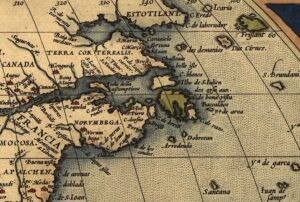Called “Japan’s Atlantis,” the Yonaguni Monument has provoked immense debate since its discovery in the 1980s. Theories of its origin range from a completely natural formation to a man-made structure built by an ancient civilization, but the true identity of the submerged oddity remains unsolved.
Background
In 1986, a man named Kihachiro Aratake was diving off Yonaguni Island in Okinawa to check out the hammerhead sharks in the area. In the surrounding shallow water, he came across a peculiar structure that seemed out of place on the ocean floor. It resembled a pyramid, with multiple steps or layers leading to the top, with clean, symmetrical edges, angles, and even steps. Standing 25m tall, 100m long, and 60m wide, the rock itself is composed of shale and sandstone and dates back 20 million years. It covers around 45,000 square meters.
No one knows how this structure got here in the first place. It was dubbed the Yonaguni Monument.
Ancient civilization?
Researcher Masaaki Kimura from the University of the Ryūkyūs believes that the structure is a group of monoliths built by humans. According to Kimura, it dates back 10,000 years and was once part of the lost continent of Mu.
Mu was a mythical continent in the Pacific, whose story parallels the myths of Atlantis and Lumeria. Supposedly, a great cataclysm, such as an earthquake or hurricane, submerged this land beneath the sea. Its survivors scattered across the Earth, founding civilizations, including those of the ancient Egyptians and Maya. Academics often discredit this theory as conjecture or a straight-up fairy tale.
Kimura cites the following evidence. First, Japan’s volatile position in the Ring of Fire subjects it to frequent earthquakes and volcanic activity. Japan also suffers from brutal typhoons, which may drive land beneath the sea.
Second, he suggests that the structure possesses possible statues that resemble animals, as well as rock carvings and holes where posts might have been. Third, he points out the structure’s straight lines, sharp corners, supposed steps, avenues, canals, and other features.

Divers at the monument. Photo: Liangtai Lin/Flickr
Some believe that the Jōmon people could have built the monument. The Jōmon were hunter-gatherers who occupied the Japanese archipelago up to 300 BC. The Yamato Japanese, who comprise 97 percent of the Japanese population today, descended from them.
Mainly, the structure looks, at least superficially, to have been deliberately constructed. Many also just like the romantic idea of an ancient underwater city.
Nature at work?
The other prevailing and more widely accepted theory is that the monument is simply the result of natural processes. Geologist Robert Schoch of Boston University is Kimura’s main critic in this matter. Schoch believes that the monument contains “numerous well-defined parallel bedding planes along which the layers easily separate.” This jointing and fracturing create rectangular and other symmetrical formations.
While they mimic steps or walls, this theory suggests that they are entirely natural. As for the carvings, Schoch does not buy that humans etched them with tools. Again, he says they are natural.
Formations such as these are not as uncommon as you would think. Schoch further explains that such 90-degree angles occur in sandstone when erosion takes place. The area’s naturally strong currents also shaped it. He even points to similar formations north of Yonaguni.

A model of the Yonaguni Monument. Photo: Liangtai Lin/Flickr
There’s always the possibility that over thousands of years, immense tectonic activity could have fractured the sandstone into geometric patterns. During the Miocene period, tectonic activity deposited great amounts of sandstone in the area. Geologists think the monument is part of a much larger underlying rock from this event. Frequent earthquakes could have fractured the rocks into all these shapes.
Conclusion
Two main expeditions to the site took place in 1986 and 1997. Neither has come to a definitive conclusion. However, the evidence leads to several good assumptions. First, even though the structure looks like a pyramid or a building with steps, you cannot actually go up the steps. They’re too big.
Second, seeing rocks as possible animal statues could just be a matter of pareidolia. This is a common phenomenon in which the eye sees faces or shapes in everyday objects, like clouds. Finally, historians have often discredited the story of the lost continent of Mu as a shoddy mistranslation of texts with no other historical backing.
Since the structure does not have any special protection from the Japanese government, divers can freely explore it and draw their own conclusions.






